Critical reflections on the delivery of fine art teaching as learner and practitioner.
Re-post – written 2004
2004 marks the 27th year from my enrolment on an Art and Design Foundation Course at Oxford Polytechnic (now Brookes University) and this essay will critically examine both my experience as a learner in various institutions in that period and a reflection on how the PGCCE delivery module and my current position as a teacher on a Foundation Art course at New College Nottingham are informed by these learner experiences. I have divided this timescale into three distinct periods for the sake of clarity. The first period from 1977 to 1981 details my learner experience at Oxford and subsequently on a Fine Art B.A. course at Hornsey College of Art (Middlesex Polytechnic now University). The second period 1994 -1996 details my activity as a practicing artist in Edinburgh Scotland whilst attending the Edinburgh University School for Continuing Education course in Scottish Cultural Studies. Thirdly is my present teaching experience before and during the PGCCE course. In all cases I am interested in the pedagogical theories and philosophies that have informed the delivery of teaching and will reflect on how this has wider social and cultural implications.
 A quarter of a century is a long time in teaching terms and I hope to show that there has been a sizable shift in the way teaching is conducted and a wider shift both in societal and governmental attitudes to the delivery of teaching. I may not square the circle any more successfully than Leonardo Da Vinci but hope to show that my own circular journey back to Foundation Art also mirrors a wider circular journey in pursuit of ‘good practice’ in teaching. Has the warning of Glynn Williams ( Royal College Professor of Sculpture) about the future of art education come true :-
Instead of the old national curriculum of thirty years ago we could soon have a national system of quality appraisal appearing to work smoothly, recipe but once more incapable of attending to the individual expectations of the student’s creative work in relationship to the current reality of their subject.(Hetherington, drugstore 1994,p.27)
or have we entered a golden age of ‘creativity’ in education as promised by the DFEE report ‘All Our Futures: Creativity, Culture & Education’ (1999) which raised ‘creativity’ in teaching methods to almost mantra status. Has that ‘creativity’ flowed through to present day students and teachers? This essay examines the ‘outcomes’.
Pupil – Student
My abiding memory of school art teaching was of a strictly timetabled and pedagogic manner. Teachers were strictly referred to as ‘Sir’ in my Grammar turned Comprehensive school. The art teaching was generally under-resourced and relied on a great deal of setting of ‘titles’ or projects which were then worked to. There was little group work although pupils did sit around tables and homework was set in a similar way. Art within the school environment was regarded as a ‘lesser’ subject as the overall ethos was that of a watered down public school. Coming from a working-class background it was thought slightly odd to even pursue art as a career and it was only the intervention of more enlightened teachers at 16 plus which overcame familial concern and allowed my continuing to a foundation course. The scenario was probably common at this time and reflected wider concerns for upward social mobility and a lack of understanding of exactly what ‘art’ was for. The teachers were generally good but there was little reflection on teaching methods and a high turnover of staff who ‘rebelled’ against the old-fashioned grammar school regime. Having gained entry to Oxford Polytechnic I was immediately thrown into a more adventurous teaching environment where variety, experimentation and artistic theory were delivered in a fairly structured way. The curriculum was based on a Bauhaus model from Weimar Germany and stressed avant-garde solutions alongside staples such as observational drawing. However none of the teaching radically departed from the current pedagogical fashions. All coursework was to be assessed by course tutors and there was no substantial group delivery or one-to-one tutorial set-up.. On the plus side a lot of the part-time tutors were radical art practitioners in their own right.
One-to-one teaching also prevailed in the B.A. tutoring at Hornsey College of Art (1978-1981). Again the model was influenced by Bauhaus although a more ‘hands-off’ attitude prevailed and self-directed and experiential methods were used extensively. Alongside this art history was delivered in a lecture style. Individual tutorials were the major point of contact between teacher and student. Once again this was a common teaching style in art schools at this period. This maps closely to Williams’ analysis of the progress of art teaching as outlined in 1994. The old Diploma courses had metamorphosed into polytechnic degree courses and slowly the haphazard regime of part time tutors was replaced by a more structured and accountable system of teaching. What was lost was the student/practitioner contact that was one of the more important benefits of this period of teaching. During the late 1960’s, 1970’s UK art schools were amongst the best in the world both in terms of resourcing and the quality of practitioner engagement. By 1978 this was starting to change as the cold winds of Thatcherism blew through the academic world. I fell foul of this political change personally as a grant to attend the Royal College M.A. in 1981 was siphoned off to provide scholarships for ‘working-class’ achievers to attend public schools….ironically. At the same time the early buds of ‘post-modernism’ were shooting up in the art colleges and older traditional (and expensive) methods such as printmaking and life-drawing were losing their place in the art school curriculum to ‘new’ media and fashions. Ironically it was at the point of greatest right-wing ideological intervention in the creative arts that the more extreme left wing radical teaching strategies gained their foothold in the art colleges. In a pre-internet age computer art, video, installation and performance were all making inroads especially as this seemed to mirror ‘important’ transatlantic developments in the arts and ‘provincial’ UK could not be left behind in the race for international avant-garde status.
Practitioner – Learner
Skipping ten years and 1993 saw me in a very different situation from the ‘ivory tower’ of art college. Whilst not claiming to be self-sufficient as an artist I could claim to be a ‘practitioner’ although practitioner/teacher appointments were not forthcoming. I had briefly taught creative writing and illustration at evening class level but whilst in Edinburgh for two years my educational experiences were firmly in the learner field. Without excessive detail these two years on a Continuing Education course in Scottish Cultural Studies introduced me to some very conservative teaching styles and some very radical wider cultural theorising. The delivery of lessons with exception of some folk music was exclusively pedagogic and strictly conservative with a great deal of lecturing and detailed handouts being provided. However the information contained therein was radically orientated to a notion of Scottish independence and introduced me to the generalist philosophy of Patrick Geddes and in turn his influence on Lewis Mumford and the development of the arts in Scotland. This may seem irrelevant to art teaching delivery but at the same time (published 1989) Peter Abbs brought Herbert Read, Lewis Mumford and D.W. Winnacott’s theories to bear on his ‘A is for Aesthetic’ book where he gave an impassioned plea for a reversal of ‘technicist’ trends in art teaching. This was bolstered by the late art critic Peter Fuller who gave a highly rational argument for a change in the way art and art schools in the U.K. were heading. This also coincided with the Glynn Williams article on ‘the practitioner’ which I referenced earlier. The argument contended that ‘specialism’ rather than ‘generalism’ was the over-riding principle in art teaching and that students were being denied the spiritual and traditional areas of teaching in pursuit of a new glossy trans-avant-garde fashionability. There was also a ‘localist’ agenda wrapped up in this argument as the contemporary (metropolitan) art scene extinguished the ‘provincial’ and this was felt keenly in Scotland around the generalist table.
Within a few years the ‘fashionistas’ had won as through intense lobbying, metropolitan art school conformity and the arrival of large dollops of Thatcherite loot ( e.g. The Satchi Collection) the UK art world was reinvigorated or destroyed depending on your point of view. Most importantly however you view the ‘Brit Art’ phenomena fine artists had become the new pop stars and the repercussions of that are still being felt in educational terms. Recently the electrical engineering department at Trent University Nottingham was slimmed down due to lack of applicants and its computers switched to the over-subscribed web/ digital arts and design course….a reflection of the current popularity of arts courses. This trend can be directly attributed to the much higher profile that artists such as Tracy Emin and Damien Hirst enjoy in the popular media. The shark was everywhere in more than one sense.
Practitioner – Facilitator?
..universities and institutions of higher learning are called upon to create skills and no longer ideals – so many doctors, so many teachers in a given discipline, so many administrators etc.
(Lyotard, Jean-Francois from The Postmodern Condition quoted in Bentley,D.M.R, 2000)
So where is art teaching after nearly thirty years and how have these changes and teacher training influenced my teaching practice? In an era of drive-thru web delivered degrees and mass media overkill what are the definitions of good practice and can one teach art at all? My present teaching practice incorporates one morning a week at New College Nottingham Foundation Art Course so in some respects I have come full circle. For an analysis of this present teaching I have drawn heavily on David Jones and his work for Nottingham University Department of Continuing Education. Jones a fine artist by training ( Leeds Art College) has theorised and published on the question of fine art teaching and creativity in some depth. In particular I am drawn to his
analysis of Maslow’s hierarchy of human needs as expressed in his pamphlet entitled ‘Creativity’ (Jones,D.1984).
Here he describes Maslow’s three stages of creativity…
.primary creativity is….concerned with the generation of symbolic images, with myth,with legend,ritual and phantasy.
It is concerned with content rather than form, with metaphor rather than structure.
..secondary creativity …concerned more with structure….designing rather than dreaming.
a synthesis of these two forms of functioning’…is the third form..
‘integrated creativity’
This not only applies to art teaching but when correlated with John Cowan’s version of Kolb’s learning cycle (Hetherington,1994,p.29 – see below) can be seen to map closely with the experiential way art students actually learn. If the past experience, exploring and consolidating fields are aligned with the above categories we are some way to understanding the processes that affect individual learning.
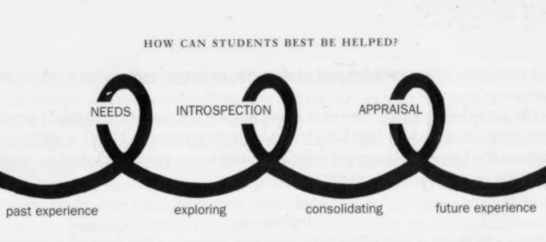
In Cowan the model assumes that tutor/student contact occurs at points on the loop where the tutor is asking questions, provoking, hearing responses before the next ‘surge’ of learning. It is compared to a plane looping the loop. This accords with my own feelings of the relationships I have established with fine art students. It is a dual process of mutual learning that depends on mutual respect and an attempt to guide rather than ‘lecture’ the student into a new phase of learning. New College assessment requires students to peer review each other’s work and this definitely brings out a mature response. On the down side there is a ‘flattening out’ of critical responses too. In some ways peer reviewing also allows ‘firm’ judgements to be avoided
in an area where ‘absolute’ values are dangerous and opinion can be confused with taste. However if we are no longer judging technique or ability only ‘creative process’ are we in fact judging artistic ‘content’ at all. The most notable aspect of the New College curriculum is the open-ended nature of both assessment and curriculum planning. Students are ‘introduced’ to materials and ‘self-initiated’ project work. Inclusivity and mutual respect are prioritised and atmosphere friendly but nowhere did I feel that rigorous criticality was to be encouraged. This is not just a problem on the small scale. Modern teaching and artistic movements overlap to a degree where a recent exhibition at the Serpentine ( ironically titled ‘State of Play’) stated boldly..
art can no longer be defined through a single dominant movement or school of thought
(Serpentine catalogue of exhibition sponsored by Hugo Boss, 2004)
Faced with this kind of statement it is small wonder the art tutor feels unable to make bold statements in a teaching context. It is my firm belief that this ‘process’ is what Abbs and Fuller warned about that in a world of all opinions being equal nobody can actually apply standards. It is my intention to teach fairly but with a strong emphasis that art history and notions of taste do involve choices. This is at odds with some of current teaching practice in this area but as Jones himself states…
If we are to help adults to become involved in creative activity we cannot ignore the difficulties, the anxieties and the internal struggles which form an essential part of the process.
(Jones, 1984, p.18)
In the move from ‘teacher’ to ‘facilitator’ I believe we may have thrown out the baby with the bath water. In the process of assessing fine artists we really have three options according to Jones. 1) Finished work 2) Watching students work and 3)Talking to students. In this sequence the second and third options are vital if we are really to engage with their ‘creativity’. I fully endorse Jones’s take on Knowles of referring to a climate of ‘mutual enquiry’. It is in individual tuition that the strength of UK art teaching once lay especially if that teacher was a practitioner. The process of moving to ‘sessional lecturers’ , project and ‘self-directed’ working strategies and the ‘homogenisation’ of criticism have lead to a fine art sector that obeys all the whims and criteria of management but few of the truly creative demands of students. Efficient throughput of these ‘units’ in a growing market causes smiles in the accounts department but are we delivering the best and ‘creative’ education we can. As I look back over nearly thirty years I see many good aspects of art teaching that have been lost and although both teachers and students are more information ‘rich’ they seem creatively poorer. Time is one category that can no longer be easily provided…one to one tutorials cost money. Yet in those moments of reciprocal learning and reflection in the 60’s and 70’s were planted the seeds of some of the best artists of the past thirty years. Those connections have been severed and will not be easily replaced however prudent the college finances. Finally a practitioner on art paraphrased by painter/teacher David Ainley at a conference on Lifelong Learning and the Arts in 2001…
….if a teacher is any good he or she learns as much as the students…the ‘answers’ if there any, are formed by all the participants in the conversation within the context of their own lives (Kosuth,J. Ten Points for an Art Academy, 1999)
References
Abbs, P (1989) A is for Aesthetic: Essays on Creative and Aesthetic Education. Lewes, Falmer.
Cowan,J (1994) ‘How can students of art and design best be helped to learn and develop?’ in Hetherington, P Artists in the 1990’s: Their Education and Values: Issues in Art and Education Volume 1: Papers submitted at conference held at the Tate Gallery in 1991 and 1992, organized by the Wimbledon School of Art in collaboration with the Tate Gallery. Wimbledon, London.
Farthing, S (2000) An Intelligent Person’s Guide To Modern Art. London, Duckworth.
Ainley, D (2001) ‘Structure, Space and Clutching Water in the Art Education of Adults.’in Jones, D.J. and Normie, G ed. 2001-A Spatial Odyssey: Papers from the 6th International Conference on Lifelong Learning and the Arts. Nottingham, Continuing Education Press, School of Continuing Education, University of Nottingham.
Jones, D.J (1984) Creativity : Adults: Psychological and Educational Perspectives 8. Nottingham, University of Nottingham Department of Adult Education.
Jones, D.J and Chadwick, A.F ed. (1981) Adult Education and The Arts: Nottingham Working Papers in the Education of Adults 2. Nottingham, University of Nottingham Department of Adult Education.
Williams, G (1994) ‘The practitioner, once a ubiquitous presence in art and design education, is now a rarity: A history of the blooming and decline of the species.’ in Hetherington, P Artists in the 1990’s: Their Education and Values: Issues in Art and Education Volume 1: Papers submitted at conference held at the Tate Gallery in 1991 and 1992, organized by the Wimbledon School of Art in collaboration with the Tate Gallery. Wimbledon, London.
Department for Education and Employment.(1999) All our futures: Creativity, Culture and Education. Sudbury, DfEE Publications.
Internet Sources
Bentley, D.M.R
1999
“Art for Arts’ Sake; or, Humanities for Humanity’s Sake. A Discussion Paper.”
Canadian Poetry
[online]
University of Western Ontario, Canada
Available at: http://www.uwo.ca/english/canadianpoetry/artsnew.htm
[Accessed 17.02.2004]
Jones, D.J
1999
“Different Theatres, Different Audiences: The Arts and the Education of Adults.”
British Education Conference Programmes
Paper presented at SCUTREA, 29th Annual Conference, 5-7 July 1999, University of Warwick.
[online]
University of Nottingham. United Kingdom.
Available at : http://www.leeds.ac.uk/educol/documents/000001002.doc
[Accessed 17.02.2004]
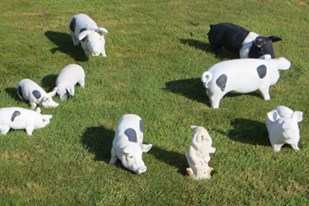
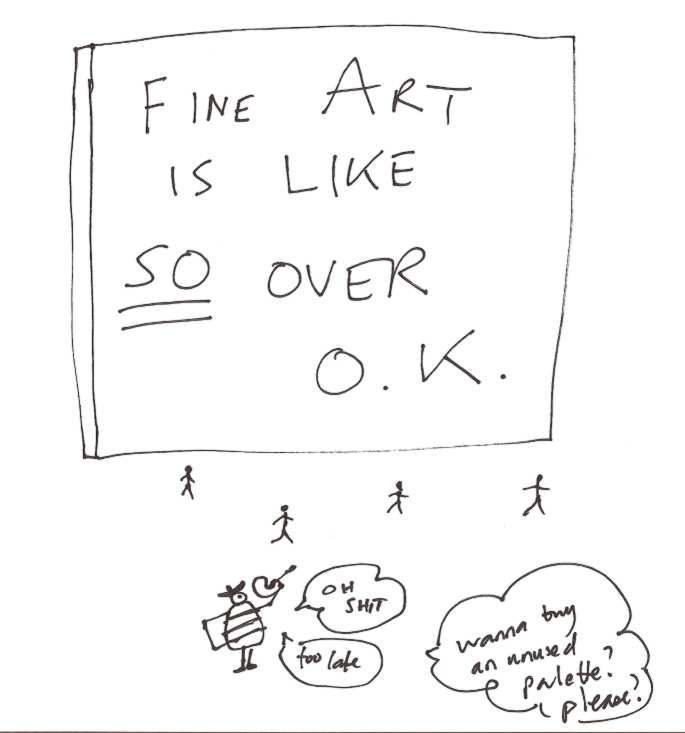 For a long time I have been known for the acerbic (sour or bitter tasting) nature of my cartoons attacking the poor denizens of the contemporary art world or I.A.W. as it likes to call itself these days i.e. the celebrated International Art World…
For a long time I have been known for the acerbic (sour or bitter tasting) nature of my cartoons attacking the poor denizens of the contemporary art world or I.A.W. as it likes to call itself these days i.e. the celebrated International Art World…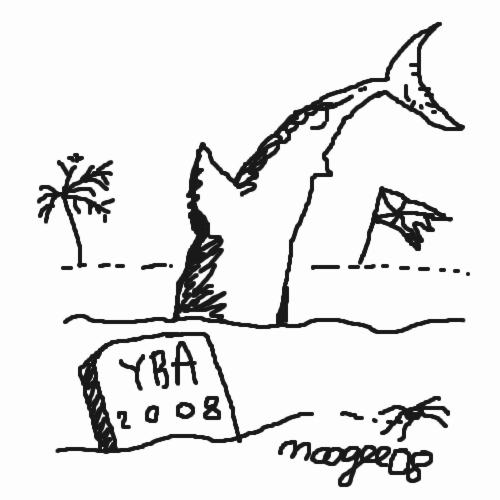
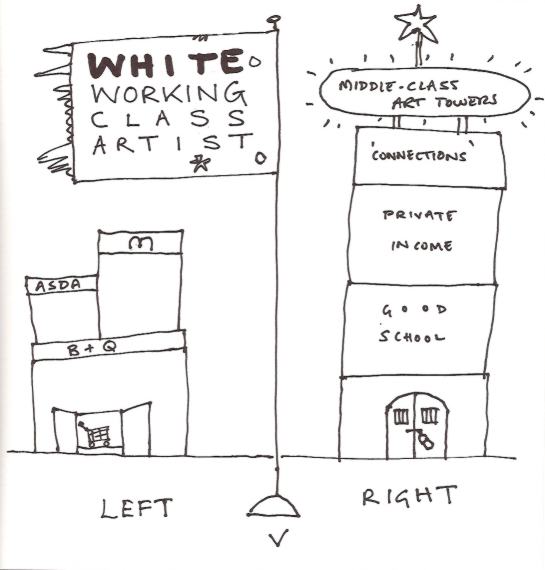


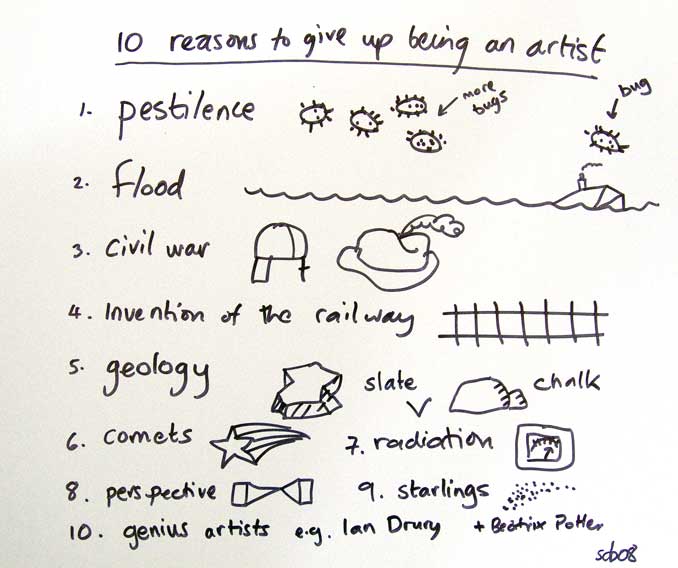

 a comment posted on Jonathan Jones blog
a comment posted on Jonathan Jones blog

 Â
Â
Recent Comments